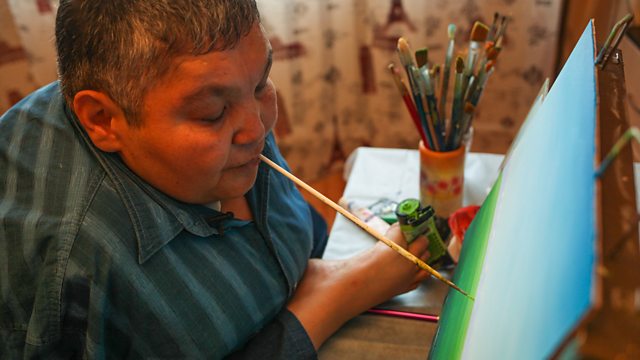The Polygon People
Rustam Qobil examines the story and legacy of the vast Soviet nuclear test site in Kazakhstan, The Polygon.
Between 1949 and 1989 the Soviet Union tested 456 nuclear bombs in Semipalatinsk in Kazakhstan. The area the size of Belgium became known as the Polygon and when Kazakhstan became independent – 25 years ago this week - it inherited the world’s fourth biggest nuclear arsenal. The ����ý’s Rustam Qobil visits the Polygon to piece together its remarkable story.
From the early days of the nuclear arms race with the USA, Russians used this vast space in Kazakhstan to test atomic bombs firstly in the open air and later underground in tunnels.
Local people in remote villages witnessed the open air explosions, coming out of their houses to admire the spectacle of a giant mushroom cloud on the steppe. Third and fourth generations are still suffering from the radiation their grandparents were exposed to.
When the Soviet Union collapsed the Russians pulled out of the Polygon leaving a dangerous amount of nuclear materials behind, unguarded. During the poverty stricken 1990s people entered the Polygon scavenging leftover copper cable. There was a real fear that the nuclear material left behind by the Soviets – amounting to dozens of bombs with the power that wiped out Nagasaki – might fall into the hands of terrorists. At the time the Semipalatinsk site posed the biggest nuclear threat around the world. For 17 years a mission led by American, Kazakh and Russian scientists quietly made the site safe again.
Rustam talks to the scientists involved in this crucial operation. He travels to ground zero where the first Russian bomb was detonated and meets the sole survivor of a Soviet experiment deliberately exposing villagers to radiation. He hears the powerful life story of Karipbek Kuyukov, an artist and activist born without arms to parents who watched the mushroom cloud in the 1950s and who wants to be the last victim of nuclear testing. He also speaks to President Nazarbayev in this anniversary year about the lessons the world can learn from Kazakhstan’s painful experience.
(Photo: Kazakh artist Karipbek Kuyukov. Credit: Kelvin Brown)
Last on
More episodes
Previous
Broadcasts
- Sun 18 Dec 2016 03:06GMT����ý World Service except News Internet
- Sun 18 Dec 2016 14:06GMT����ý World Service except East and Southern Africa, News Internet & West and Central Africa
- Sun 18 Dec 2016 15:06GMT����ý World Service East and Southern Africa & West and Central Africa only
- Wed 21 Dec 2016 09:06GMT����ý World Service except Americas and the Caribbean & News Internet
- Wed 21 Dec 2016 12:06GMT����ý World Service Americas and the Caribbean
- Wed 21 Dec 2016 23:06GMT����ý World Service except News Internet
- Thu 22 Dec 2016 02:06GMT����ý World Service Australasia

